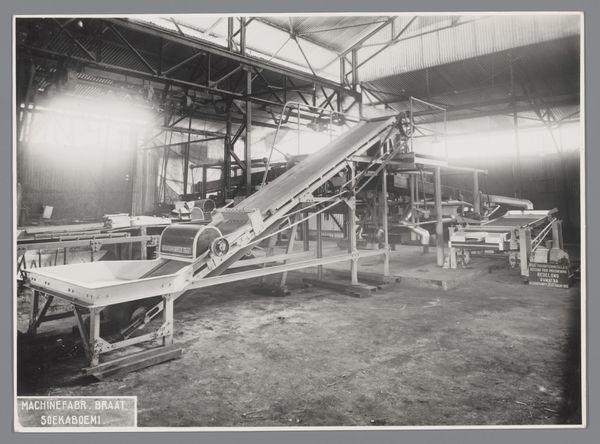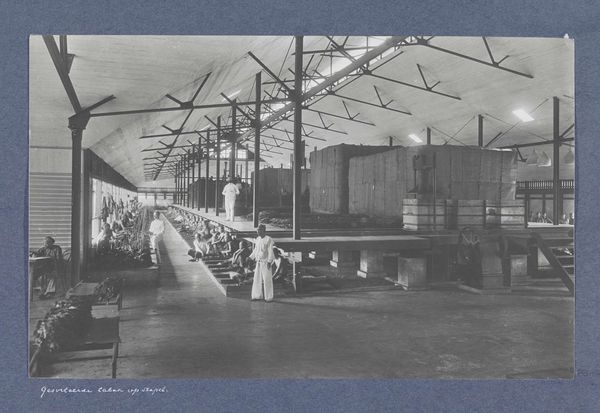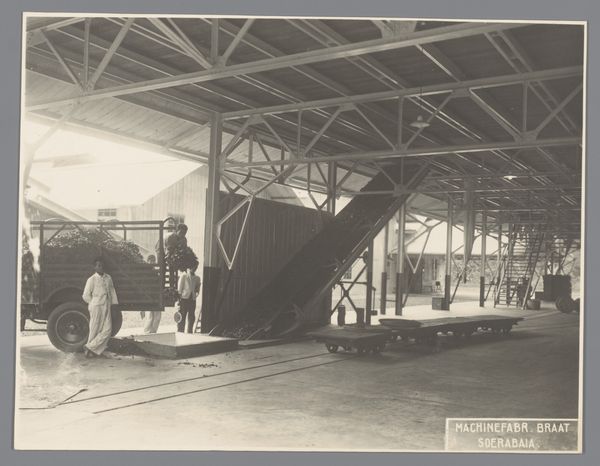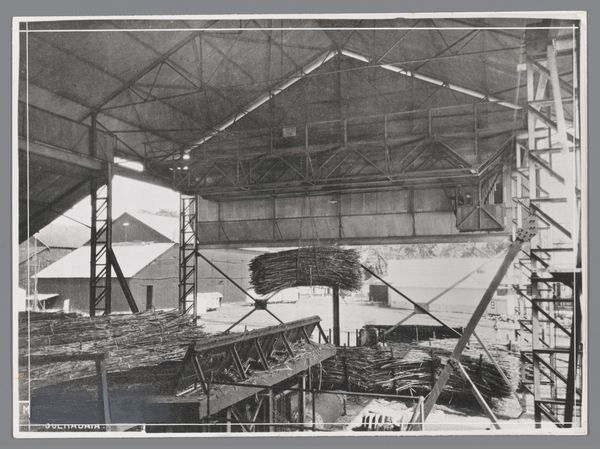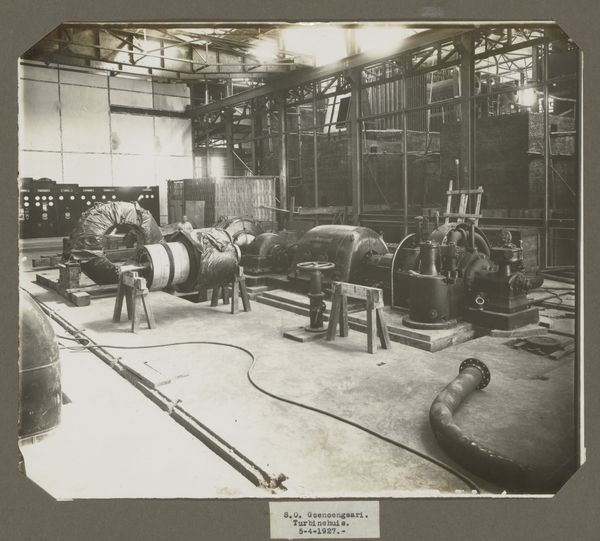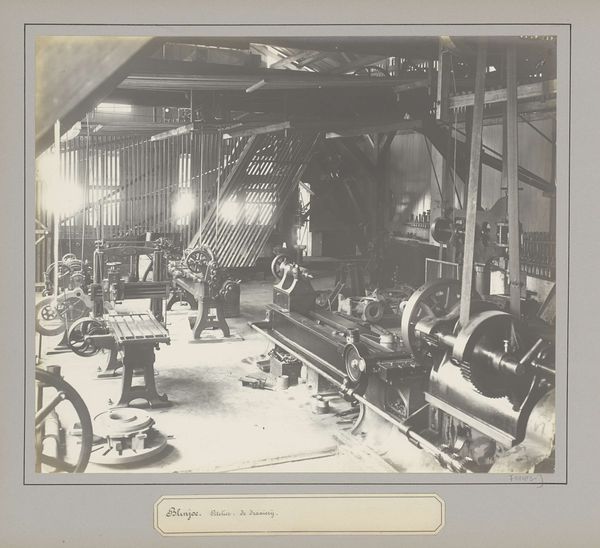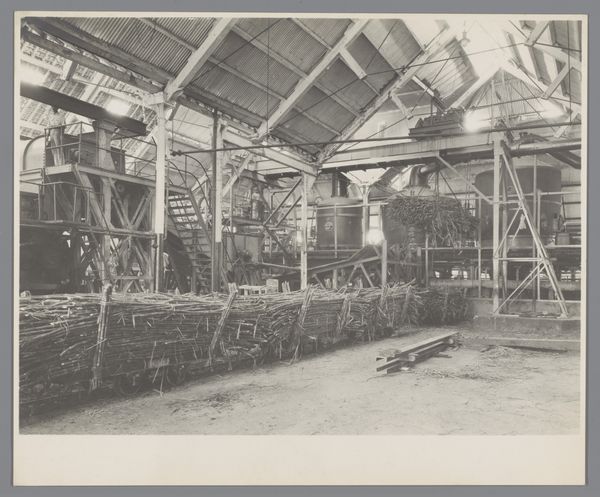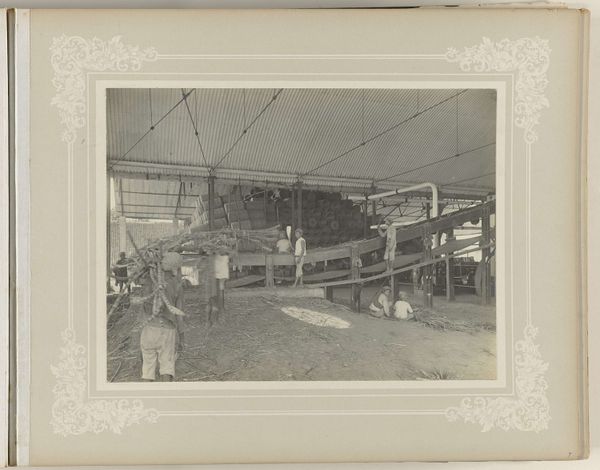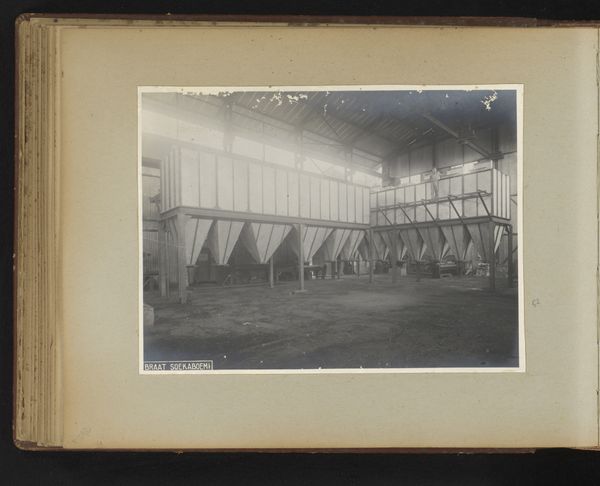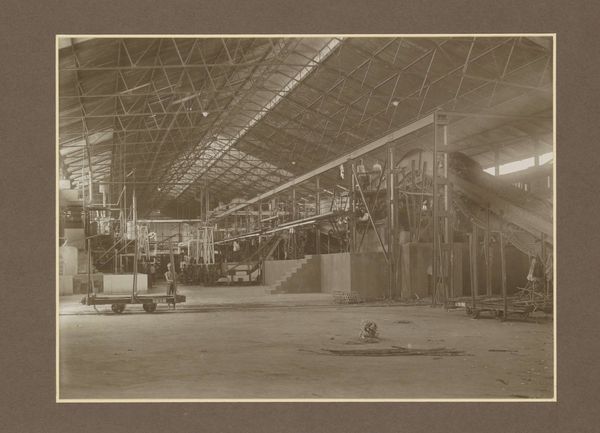
print, photography, gelatin-silver-print
#
17_20th-century
# print
#
landscape
#
archive photography
#
photography
#
gelatin-silver-print
#
19th century
#
history-painting
#
realism
Dimensions: height 240 mm, width 285 mm
Copyright: Rijks Museum: Open Domain
Editor: This gelatin silver print, titled "Raffinage-installatie van tinonderneming te Belinyu," comes from somewhere between 1900 and 1920. It's an anonymous shot of what appears to be a tin refinery. What strikes me is the geometry of the industrial structure, framed by a decaying, almost picturesque interior. What do you see in this piece, especially from a formalist approach? Curator: Indeed. The image presents a compelling interplay of textures and forms. Observe how the photographer contrasts the rough, aged surfaces of the refinery’s structure with the precise lines of the wooden beams. The composition guides the eye—from the light filtering through the roof to the darker, denser elements in the foreground. What effect does the tonal range, from the brightest highlights to the deepest shadows, create within the composition? Editor: I notice the stark contrast, creating a sense of depth. It feels almost like a stage set, with the industrial apparatus as the actors. Is that contrast intentionally emphasized, to draw attention to the processes occurring there? Curator: Possibly. But consider the formal relationships first. The repetition of vertical lines, contrasted with the horizontal plane of the work floor. The play of light. It suggests a constructed reality—an aesthetic ordering of what could otherwise be perceived as chaos. Is the photograph intended to aestheticize industry itself? Editor: That's a good question. By focusing on these formal elements, we’re pulling away from its historical context, and more toward… a visual study of contrasts? I’m starting to see it differently now. Curator: Precisely. It's a demonstration of how line, form, and light contribute to the creation of meaning independent of subject matter, and almost re-creates our sense of the time frame when the photograph was composed. Editor: I hadn't thought about analyzing a photograph this way before. Thanks!
Comments
No comments
Be the first to comment and join the conversation on the ultimate creative platform.
